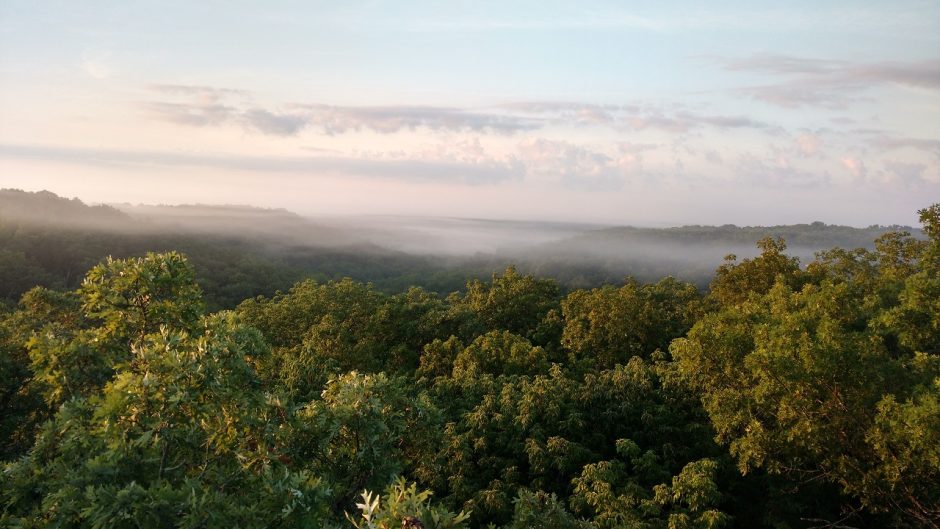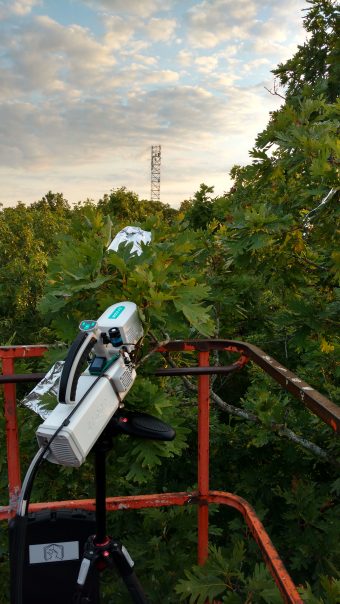
Feb. 20, 2023
Contact: Courtney Perrett, 573-882-6217, cperrett@missouri.edu

Missouri is home to an array of natural resources, with forests among the state’s most valuable ecosystems. As warmer temperatures fueled by climate change affect ecosystems globally, forests are under stress to adapt to these changes and ensure their survival in a warmer world.
In a new study, University of Missouri researcher Jeffrey Wood introduces the “ecosystem wilting point” concept, which explains how whole forests respond to drought. Wood and his research team found that when forests reach their ecosystem wilting point, they are less able to function properly, which includes their ability to absorb carbon dioxide. To learn how the forest behaved during periods of drought, Wood combined measurements of evapotranspiration (the loss of water to the air) and ecosystem water status, which indicates how hydrated the forest is.
“The motivating reason for being able to understand the drought response of forests is that, globally, drought is important now, and it's not expected to get better,” said Wood, an assistant professor in the College of Agriculture, Food and Natural Resources. “We wanted to develop a better way to understand and characterize these ecosystems, so we can use that information to help with modeling the dynamics of vegetation over time and better understand the future impact on these ecosystems.”
In pursuit of understanding the nuances of forests’ stress, Wood and his co-authors reanalyzed data collected during an extreme drought event that took place in 2012 in Baskett Forest, an outdoor laboratory of 2,266 acres located five miles east of Ashland, Missouri. This study uses a method that was initially developed to understand the interaction between water and an individual cell. That method was later applied to leaves, and then Wood extended it in this study to analyze a whole forest.
In this study, this oak-hickory forest in central Missouri reaches its ecosystem wilting point between 2-4 weeks of extreme drought. At that point, the forest would need soaking rainfall to rejuvenate.
“The ecosystem wilting point is functionally significant in that when the forest passes that threshold, there is a noticeable change in how the forest is behaving,” Wood said. “When you get into that highly stressed state, the forest is quite unresponsive to changes in the environment. So, when the sun comes up, you would tend to think that the forest turns on and starts to photosynthesize, but if the forest is past its ecosystem wilting point, it has a very limited capacity to respond to the changes in light in terms of carbon dioxide uptake because it's under so much stress.”
This study offers insight into the water relations of whole forests, a useful tool for researchers exploring how forests across the globe handle temperature variations — something Wood emphasizes is important as scientists manage forests in a way that prepares them to better withstand climate change.
“Forests are pretty important; they’re connected to weather and the climate in ways that we still don't fully understand,” Wood said.
“The ecosystem wilting point defines drought response and recovery of a Quercus-Carya forest” was published in Global Change Biology. Co-authors include Lianhong Gu, Paul J. Hanson, Christian Frankenberg and Lawren Sack.

![062625_CEI Aerial View_email-cropped[29] (1)](https://showme.missouri.edu/wp-content/uploads/2025/06/062625_CEI-Aerial-View_email-cropped29-1-940x529.jpg)


